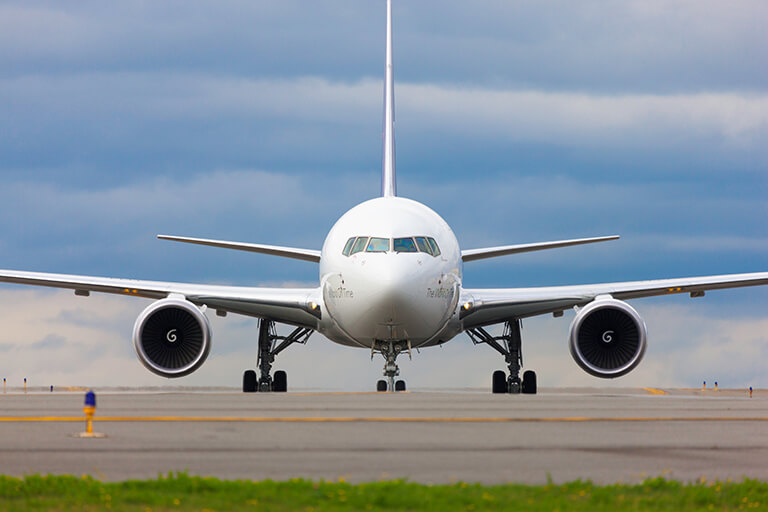How To Surf The Digital Economy Successfully
More and more shoppers are surfing online stores through their mobile phones and social media. It’s time to optimize your business to match the shopping habits of consumers in Asia and beyond.
The e-commerce revolution grew exponentially since the COVID-19 pandemic and has created a fundamental shift in the consumer mindset and behaviors. Businesses of all sizes, from start-ups to small and medium-sized enterprises, continue to leverage the opportunity to expand online shoppers and drive sales overseas.
With e-commerce, SMEs can showcase their brand and product to customers anywhere in the world. And thanks to social media, they get first-hand, often real-time, feedback on consumer trends, meaning they can improve their product fast to meet their demands. How can e-tailers surf the digital economy to target overseas customers? Check out my key takeaways below:
Social commerce is now crucial for business success
Of course, it’s no longer enough just to have a website. Businesses need to make the experience simple and compelling for customers shopping on mobile phones and through social networks. Integrating e-commerce, mobile commerce and social commerce means working across multiple platforms to stay connected to customers at all times.
With e-commerce, SMEs can showcase their brand and product to customers anywhere in the world. And thanks to social media, they get first-hand, often real-time, feedback on consumer trends, meaning they can improve their product fast to meet their demands. How can e-tailers surf the digital economy to target overseas customers? Check out my key takeaways below:
Social commerce is now crucial for business success
Of course, it’s no longer enough just to have a website. Businesses need to make the experience simple and compelling for customers shopping on mobile phones and through social networks. Integrating e-commerce, mobile commerce and social commerce means working across multiple platforms to stay connected to customers at all times.

For mobile purchases, companies can add features like geo-targeting, in-app notifications, mobile wallets and QR codes, so potential buyers can make successful, frictionless purchases. These options are making one-click repeat purchases easier too.
But social commerce is taking things a step further. Depending on the market you’re selling in, the rise of live streaming within social commerce may drive a special kind of one-click purchase - the impulse buy. The real-time, experiential aspect of live shopping, combined with the likelihood of an online personality endorsing the product, compels online shoppers to make instant purchases.
Factor in flash sales and the ability to interact directly with the shopping host or channel to chat about the purchase and some brands, especially in the fashion, jewelry or beauty space, are you’re onto a huge win. 39% of consumers in Asia Pacific have purchased using live streaming or live selling in 2021, the highest region globally. The trend is most sophisticated – and lucrative - in Korea and China, generating huge revenue for sellers and streaming platforms.
Research the audience where you are selling. Live commerce varies in popularity in different markets, and you may have greater success focusing on social selling on the platform that really works for them – whether it’s Facebook, Instagram, LINE or TikTok.
APAC consumers are mobile-first
In Asia Pacific, mobile commerce is on the up. 63% of consumers in the region use mobile apps as their primary shopping method. China, especially, is at an all-time high of over 79% thanks to the popularity of apps like Taobao, Tmall and XiaoHongShu.
Of course, Asia Pacific is a diverse region of varying technological infrastructure, affluence, youth population, GDP and many other factors. That means usage of mobile commerce does fluctuate. While mobile shoppers are at 75% in Indonesia, in Japan it’s just 74.1%.
But social commerce is taking things a step further. Depending on the market you’re selling in, the rise of live streaming within social commerce may drive a special kind of one-click purchase - the impulse buy. The real-time, experiential aspect of live shopping, combined with the likelihood of an online personality endorsing the product, compels online shoppers to make instant purchases.
Factor in flash sales and the ability to interact directly with the shopping host or channel to chat about the purchase and some brands, especially in the fashion, jewelry or beauty space, are you’re onto a huge win. 39% of consumers in Asia Pacific have purchased using live streaming or live selling in 2021, the highest region globally. The trend is most sophisticated – and lucrative - in Korea and China, generating huge revenue for sellers and streaming platforms.
Research the audience where you are selling. Live commerce varies in popularity in different markets, and you may have greater success focusing on social selling on the platform that really works for them – whether it’s Facebook, Instagram, LINE or TikTok.
APAC consumers are mobile-first
In Asia Pacific, mobile commerce is on the up. 63% of consumers in the region use mobile apps as their primary shopping method. China, especially, is at an all-time high of over 79% thanks to the popularity of apps like Taobao, Tmall and XiaoHongShu.
Of course, Asia Pacific is a diverse region of varying technological infrastructure, affluence, youth population, GDP and many other factors. That means usage of mobile commerce does fluctuate. While mobile shoppers are at 75% in Indonesia, in Japan it’s just 74.1%.

Digitalization has made the world more connected and accessible. The rewards are high and the start-up costs are low. Owning a website is all you need to sell to anyone around the world. But precisely because it’s so easy to set up a business, it’s important to stay ahead of the competition. Anyone can copy an original idea and start selling something similar very quickly, undercutting you in the process.
With such low barriers to entry, many small online businesses are springing up across the region, meaning more choice for the consumer. Due to short attention spans and shifting social media trends, SMEs have to fight harder than ever to attract customer attention.
The shift from online storefront to marketplace
Given these challenges to convert to purchase decision, it’s crucial that SMEs make the final step – the checkout process – as straightforward as possible. Overseas customers want currency, fees and taxes to be straightforward, and most importantly to have the delivery process fully integrated without a hitch.
79% of consumers’ e-commerce spend is currently through marketplaces, up significantly in the last three years. The benefits of marketplaces include ease/speed of set-up, lower set-up costs and lower financial risk.
With such low barriers to entry, many small online businesses are springing up across the region, meaning more choice for the consumer. Due to short attention spans and shifting social media trends, SMEs have to fight harder than ever to attract customer attention.
The shift from online storefront to marketplace
Given these challenges to convert to purchase decision, it’s crucial that SMEs make the final step – the checkout process – as straightforward as possible. Overseas customers want currency, fees and taxes to be straightforward, and most importantly to have the delivery process fully integrated without a hitch.
79% of consumers’ e-commerce spend is currently through marketplaces, up significantly in the last three years. The benefits of marketplaces include ease/speed of set-up, lower set-up costs and lower financial risk.

That’s why many e-commerce operators have diversified, choosing to sell on third-party marketplaces as well as their proprietary site. Integrated platform tech means that the buyer is given simple, streamlined checkout options. Increasingly, e-commerce platforms such as Shopify and BigCommerce provide a safe, seamless, and localized experience for customers, automatically displaying the checkout page in their language, accepting their preferred payment methods and showing prices in their local currency. At FedEx, we have also teamed up with many leading e-commerce marketplaces to offer one-step shipping.
The final step is seamless delivery. When it comes to connecting businesses with their customers efficiently, the right logistics provider can take your customer journey to the finish line.
Got questions or need help with shipping, or setting up the right e-commerce solution for your business? Our Small Business Center has all of the resources you need in one place to expand your business overseas.
The final step is seamless delivery. When it comes to connecting businesses with their customers efficiently, the right logistics provider can take your customer journey to the finish line.
Got questions or need help with shipping, or setting up the right e-commerce solution for your business? Our Small Business Center has all of the resources you need in one place to expand your business overseas.
***


















 The Latest
The Latest